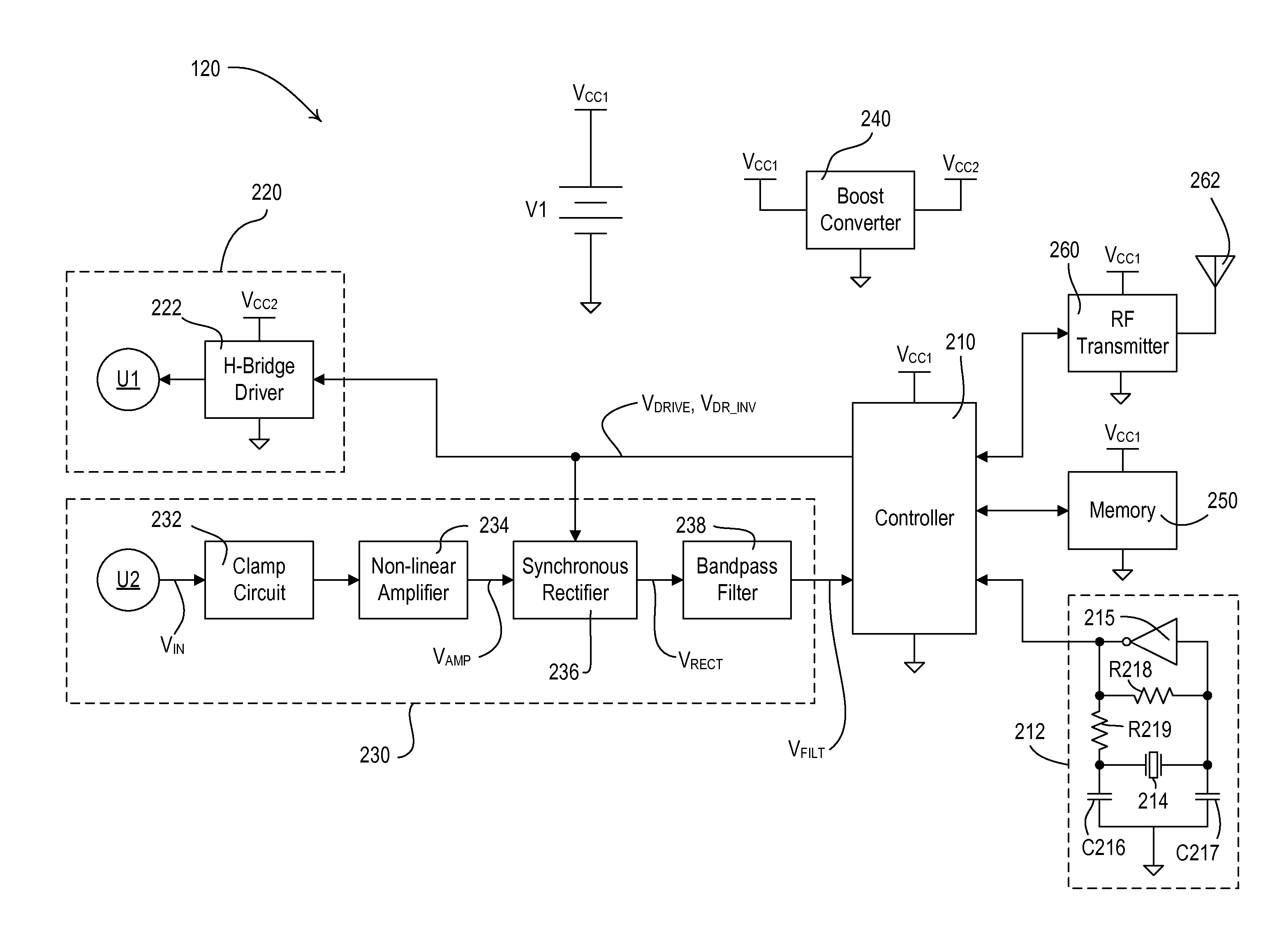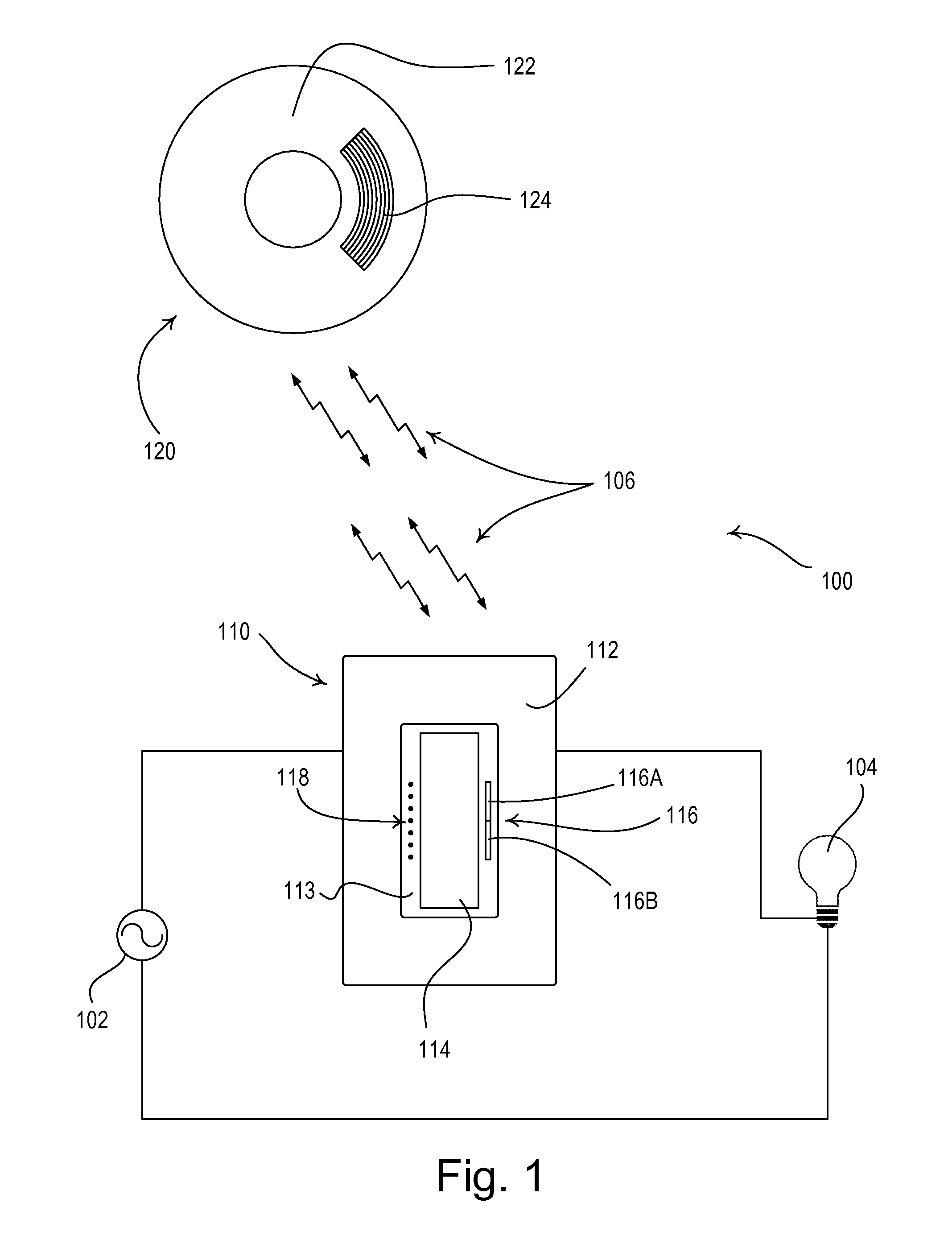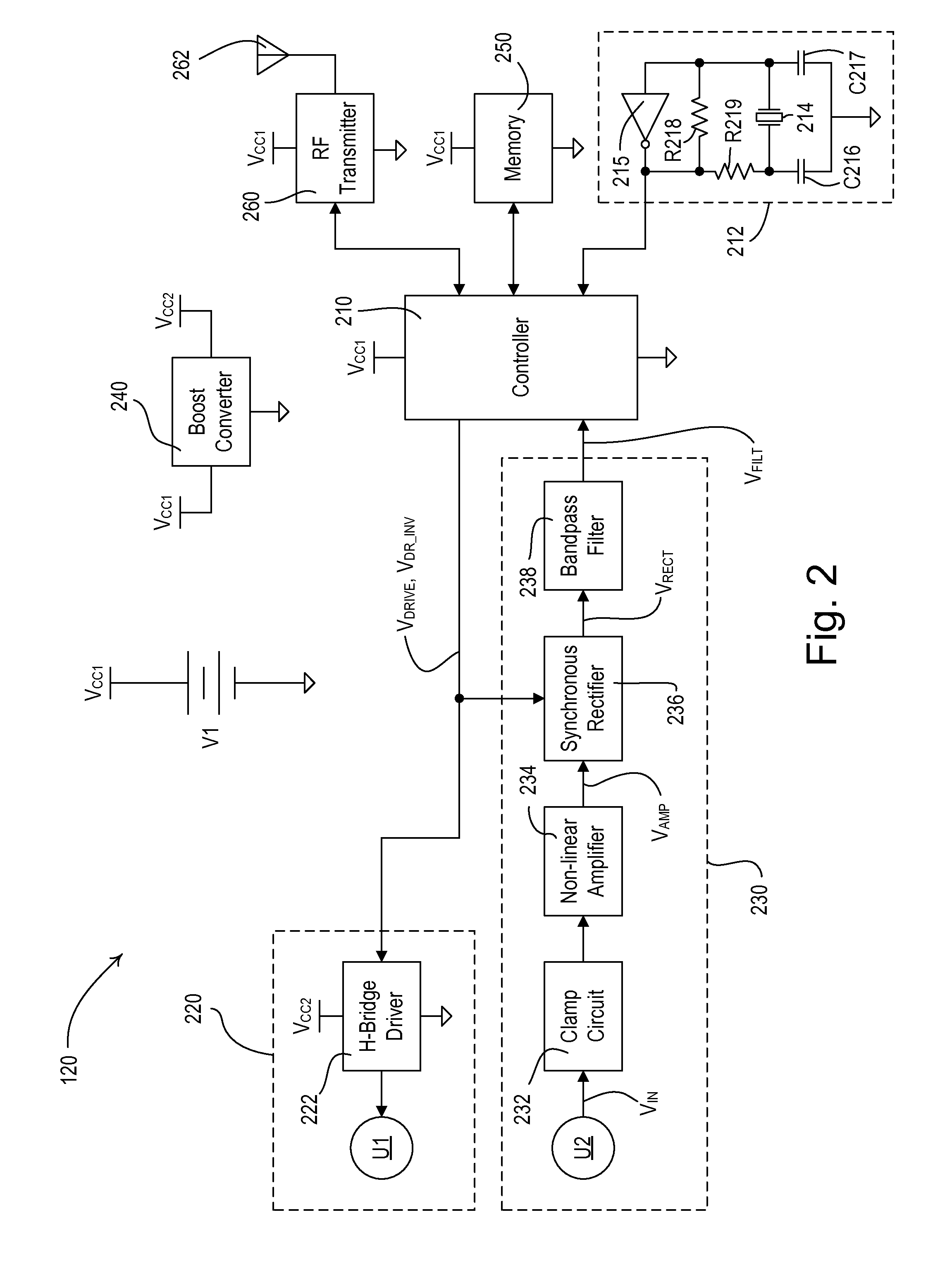Ultrasonic receiving circuit
a technology of ultrasonic receiving circuit and occupancy sensor, which is applied in the direction of mechanical actuation of burglar alarms, using reradiation, instruments, etc., can solve the problems of limiting the ability to detect small-magnitude ultrasonic waves with a doppler shift, circuits are very sensitive to thresholds, and receive ultrasonic waves are difficult to distinguish from received ultrasonic waves
- Summary
- Abstract
- Description
- Claims
- Application Information
AI Technical Summary
Benefits of technology
Problems solved by technology
Method used
Image
Examples
Embodiment Construction
[0026]The foregoing summary, as well as the following detailed description of the preferred embodiments, is better understood when read in conjunction with the appended drawings. For the purposes of illustrating the invention, there is shown in the drawings an embodiment that is presently preferred, in which like numerals represent similar parts throughout the several views of the drawings, it being understood, however, that the invention is not limited to the specific methods and instrumentalities disclosed.
[0027]FIG. 1 is a simple diagram of a radio-frequency (RF) lighting control system 100 comprising a dimmer switch 110 and a remote ultrasonic occupancy sensor 120 according to an embodiment of the present invention. The dimmer switch 110 is adapted to be coupled in series electrical connection between an AC power source 102 and a lighting load 104 for controlling the amount of power delivered to the lighting load. The dimmer switch 110 may be adapted to be wall-mounted in a stan...
PUM
 Login to View More
Login to View More Abstract
Description
Claims
Application Information
 Login to View More
Login to View More - R&D
- Intellectual Property
- Life Sciences
- Materials
- Tech Scout
- Unparalleled Data Quality
- Higher Quality Content
- 60% Fewer Hallucinations
Browse by: Latest US Patents, China's latest patents, Technical Efficacy Thesaurus, Application Domain, Technology Topic, Popular Technical Reports.
© 2025 PatSnap. All rights reserved.Legal|Privacy policy|Modern Slavery Act Transparency Statement|Sitemap|About US| Contact US: help@patsnap.com



